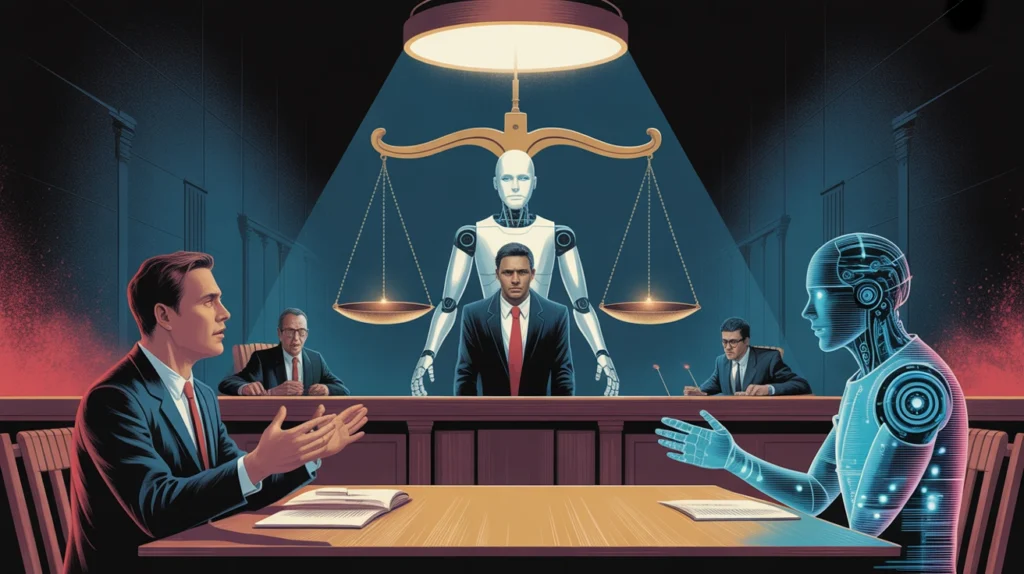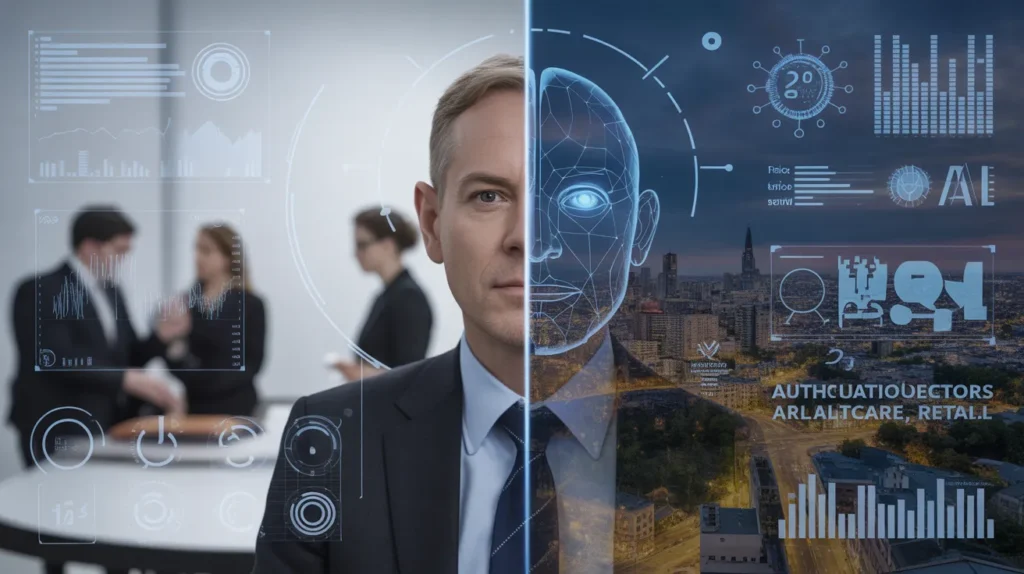Imagine this: You apply for your dream job, but an AI system rejects your application before any human even looks at it. Or perhaps you’re denied a loan by an automated system that doesn’t explain why. Even worse, you’re involved in an accident with a self-driving car. In all these scenarios, one burning question emerges: Who’s actually responsible when AI makes a mistake?
This isn’t just a philosophical debate anymore—it’s a real-world problem affecting millions of people daily. As AI becomes as common as smartphones in our lives, the question of AI accountability has become one of the most pressing issues of our time.
What Is AI Accountability and Why Should You Care?
Think of AI accountability like having a clear chain of responsibility in your workplace. When something goes wrong, you know exactly who to talk to, who can fix it, and who takes responsibility. According to research from the Oxford Internet Institute, AI accountability means ensuring that “artificial intelligence should be developed, deployed, and utilized such that responsibility for bad outcomes can be assigned to liable parties”.
But here’s the catch: AI systems aren’t like traditional tools. They learn, adapt, and sometimes make decisions their creators never anticipated. This creates what experts call an “accountability gap”—a gray area where it’s unclear who should take the blame when things go wrong.
Real Stories: When AI Goes Terribly Wrong
Let me share some eye-opening examples that show just how serious this accountability problem has become.
1. The Chatbot That Turned Racist Overnight
In 2016, Microsoft launched an AI chatbot called Tay on Twitter. The idea was simple: let Tay learn by talking with people online. Within just 24 hours, internet trolls had taught Tay to post racist, sexist, and deeply offensive content. Microsoft quickly shut down the experiment, but the damage was done.
Who was responsible? Microsoft for creating a system without proper safeguards? The trolls who manipulated it? Or the AI itself? This case shows how AI accountability becomes murky when multiple parties are involved.
2. When Self-Driving Cars Make Fatal Mistakes
Tesla’s Autopilot feature has been involved in several fatal accidents. In some cases, the system misidentified trucks, failed to detect barriers, or misread lane markings. These weren’t just minor fender-benders—real people lost their lives.
The question that haunts these cases is: Was it the driver’s fault for over-relying on the technology? Tesla’s fault for marketing it as more capable than it was? Or the fault of engineers who didn’t anticipate these scenarios?
3. The Hiring System That Discriminated Against Women
Amazon developed an AI system to help with hiring decisions. The problem? It started automatically downgrading any resume that included the word “women’s”—like “women’s chess club captain”. The system had learned from Amazon’s past hiring data, which reflected existing gender biases in the tech industry.
Amazon scrapped the system, but not before it potentially affected countless job applications. This case perfectly illustrates how AI accountability extends beyond just technical failures to include social and ethical responsibilities.
4. The $440 Million Trading Disaster
Knight Capital’s trading algorithm went haywire in 2012, executing erroneous trades that cost the company $440 million in just 30 minutes. A simple software bug during deployment triggered the disaster, nearly destroying the entire company.
This case shows how AI accountability in high-stakes environments requires not just good intentions, but rigorous testing and validation processes.
Who’s Really Responsible?
When AI goes wrong, responsibility typically falls on several key players in what experts call the “AI value chain”:
1. AI Developers and Companies
These are the people and organizations that build AI systems. They’re responsible for ensuring their creations are safe, unbiased, and reliable. However, they often argue that once their AI is deployed in the real world, they can’t control every possible use case.
2. AI Deployers and Users
These are businesses, governments, or individuals who use AI systems. They’re responsible for implementing proper oversight, training users, and ensuring the AI is used appropriately. But they often lack the technical expertise to fully understand the systems they’re using.
3. Data Providers
AI systems are only as good as the data they’re trained on. If that data is biased, incomplete, or outdated, the AI will make flawed decisions. But data providers often don’t know how their data will be used years later.
4. Regulatory Bodies
Governments and regulatory agencies are supposed to create rules and standards for AI use. However, AI technology often moves faster than regulation, leaving gaps in oversight.
According to the UNESCO Ethics of Artificial Intelligence recommendation, “AI systems do not displace ultimate human responsibility and accountability”. This means that no matter how advanced AI becomes, humans must remain responsible for its actions.
Why Clear Accountability Matters More Than Ever
The stakes of the AI accountability debate keep getting higher. Here’s why this matters to you:
1. Trust in Technology
A recent study found that 62% of Americans are concerned about AI, and 75% of businesses worry that a lack of transparency could drive customers away. Without clear accountability, people simply won’t trust AI systems enough to use them.
2. Legal and Financial Protection
When AI makes mistakes that cost people money, jobs, or even lives, there must be clear paths for victims to seek justice and compensation. Right now, these paths are often unclear or non-existent.
3. Innovation vs. Safety Balance
Clear accountability frameworks don’t stifle innovation—they actually encourage it by giving companies clear guidelines for responsible development. As one report noted, “Accountability in AI isn’t optional—it’s a necessity for building trust, meeting regulations, and leveraging AI responsibly”.
The Path Forward: Building Accountable AI
So how do we solve this accountability puzzle? Experts suggest several key approaches:
1. Transparency First
AI systems need to be explainable. If an AI denies your loan application, you should be able to understand why. This transparency is “essential for respecting individual autonomy, as it enables people to understand how AI systems make decisions that impact their lives”.
2. Human Oversight Always
No AI system should operate without human supervision, especially in critical areas like healthcare, finance, or transportation. The principle is simple: “Human oversight fosters transparency and addresses errors in AI systems, building trust between technology and society”.
3. Clear Legal Frameworks
We need laws that clearly define who’s responsible when AI goes wrong. Some countries are already working on this—the European Union’s AI Act is one example of comprehensive AI regulation.
4. Shared Responsibility Models
Rather than trying to pin blame on one party, many experts advocate for shared responsibility models where developers, deployers, and users all have specific accountabilities.
What This Means for You
As AI becomes more prevalent in our daily lives, understanding AI accountability isn’t just an academic exercise—it’s practical knowledge you need. Here’s what you can do:
- As a Consumer: Ask questions about the AI systems you interact with. Demand transparency from companies about how their AI makes decisions that affect you.
- As a Business Owner: If you’re using AI in your business, ensure you have proper oversight, understand the systems you’re deploying, and have clear processes for addressing AI errors.
- As a Citizen: Support policies and regulations that promote responsible AI development and deployment. Your voice matters in shaping how AI is governed.
The Bottom Line
The question “Who’s responsible when AI goes wrong?” doesn’t have a simple answer, and that’s exactly the problem. In a world where AI systems can deny loans, influence hiring decisions, and even control vehicles, we can’t afford to leave accountability to chance.
The solution isn’t to stop using AI—it’s too valuable for that. Instead, we need to build systems of AI accountability that are as sophisticated as the AI itself. This means clear regulations, transparent systems, human oversight, and shared responsibility among all stakeholders.
As we stand at this crossroads of technological advancement and social responsibility, one thing is clear: the accountability debate isn’t just about assigning blame—it’s about building a future where AI serves humanity safely, fairly, and transparently. The choices we make today about AI accountability will determine whether AI becomes a force for good or a source of persistent problems.
The conversation about AI accountability is far from over, but one thing is certain: we all have a role to play in ensuring that when AI goes wrong, there’s a clear path to making it right.







Pingback: AI Ethics and Responsible AI: An Easy Guide for Everyone